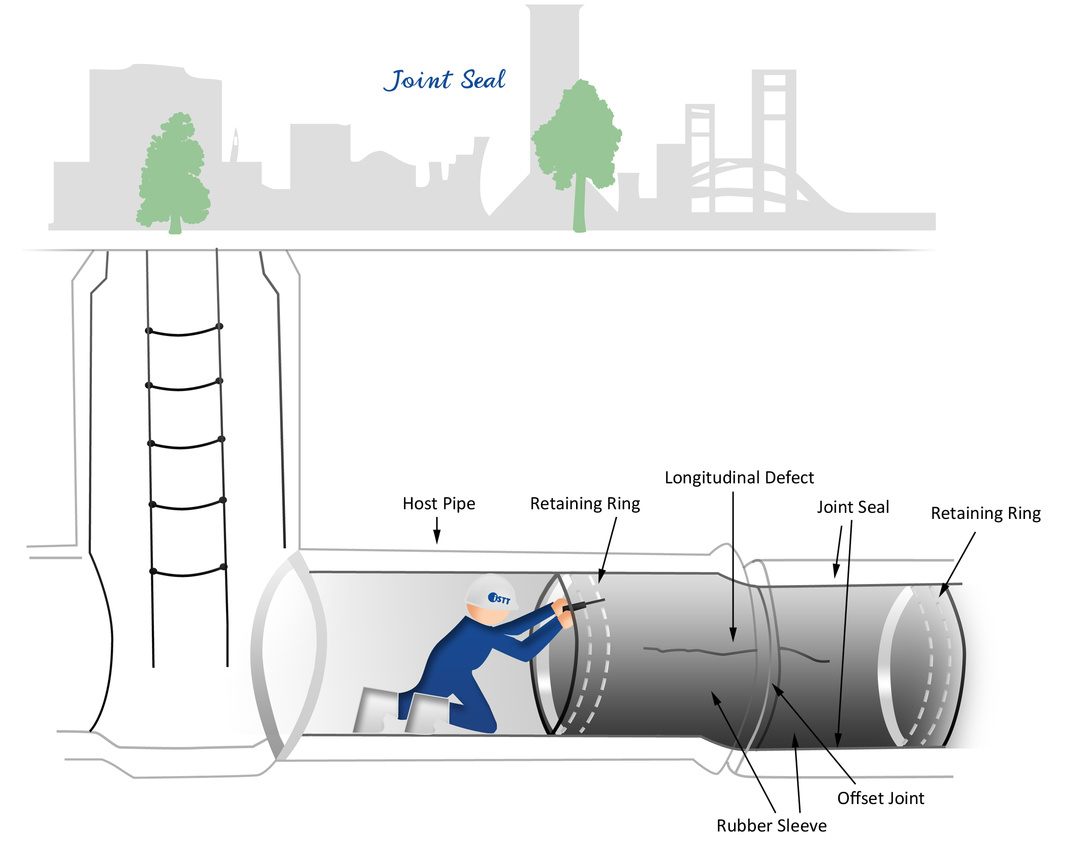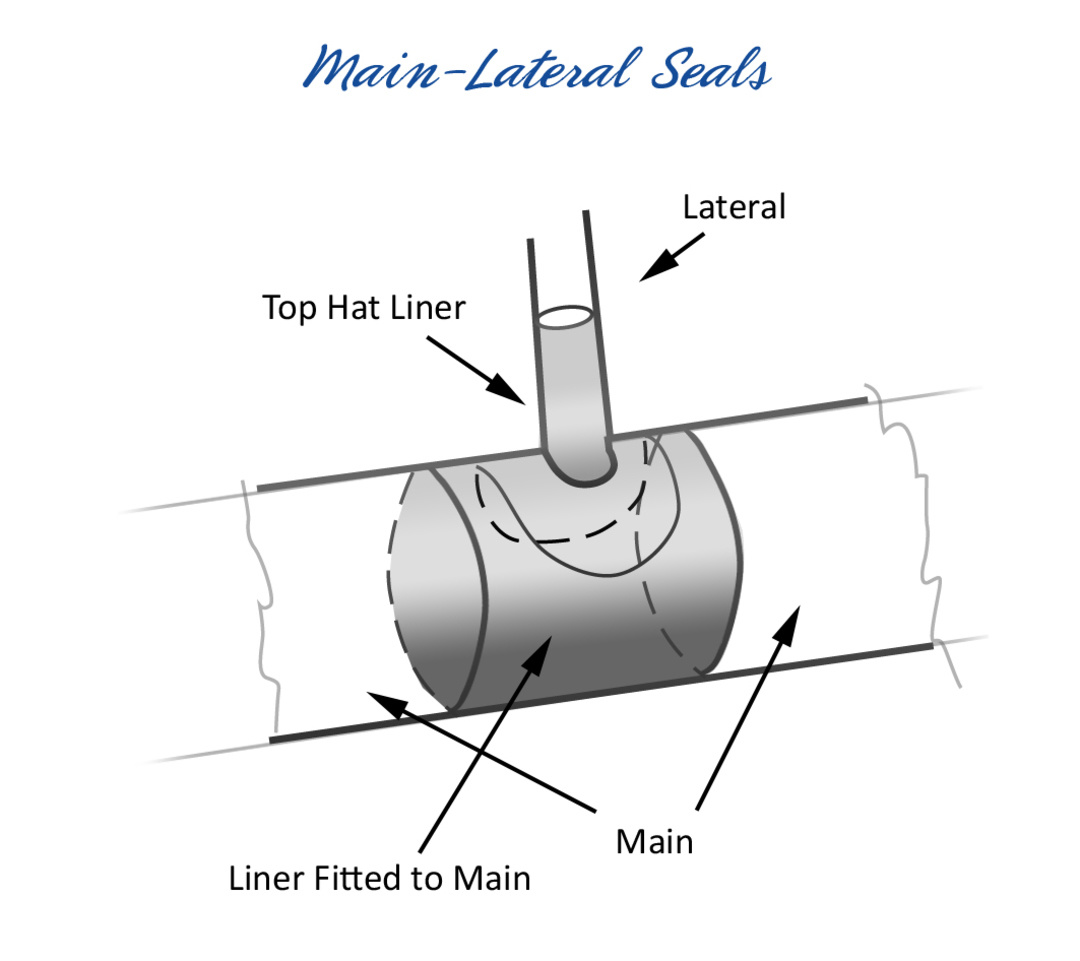- Localized Sealing
-
Localized seals are available to repair pipe defects at joints or over short distances along the pipe, and to seal defective connections between mains and laterals. There are two general types of localized seals. One type, commonly called a joint seal is used to seal defective pipe joints and other pipe defects. Joint seals typically consist of a rubber gasket sized to the dimensions of the pipe and secured by stainless steel retaining rings or cylinders. The second type of localized seal is used to seal connections between mains and laterals. These seals use a fabric gasket or liner impregnated with resin, which is cured at ambient temperature or by steam or UV light. Some localized seals may employ both retaining rings and curing to secure the seal.Joint seal systems come in a wide range of sizes for repair of relatively small diameter pipes to man-entry pipes. Man-entry joint seals are typically positioned and installed manually. Seals used to repair smaller pipes are positioned at the damaged joint or pipe defect either by a remote controlled robot or a winch. The winched–in system uses an inflatable packer to expand the seal, pushing the rubber or fabric seal against the walls of the pipe. The seal is secured to the walls of the host pipe either by a ring or cylinder, positioned inside and near the ends of the sleeve. The ring or cylinder is expanded, pressing the sleeve against the walls of the host pipe. Alternatively, the sleeve may be secured by a resin between the outside wall of the sleeve and the inside wall of the host pipe, which is cured to create a seal that bridges the defect.
Also see ""joint grouting".

The connection between mains and laterals is typically sealed using a resin-impregnated liner material that is sized to, and conforms with, the walls of the main and lateral. The seal is positioned in the main at the lateral remotely where it is fitted to the main and lateral either by robot or by inflatable packer. Some main/lateral seals cover only a portion of the main wall while others are sized to line the main at the connection. Seals may extend a short length into the lateral, up to the first joint, or extend further into the lateral above the ground water line. Some main/lateral seals also employ o-rings to further secure the seal to the main and lateral walls.

The International Society for Trenchless Technology
 Cart
Cart
